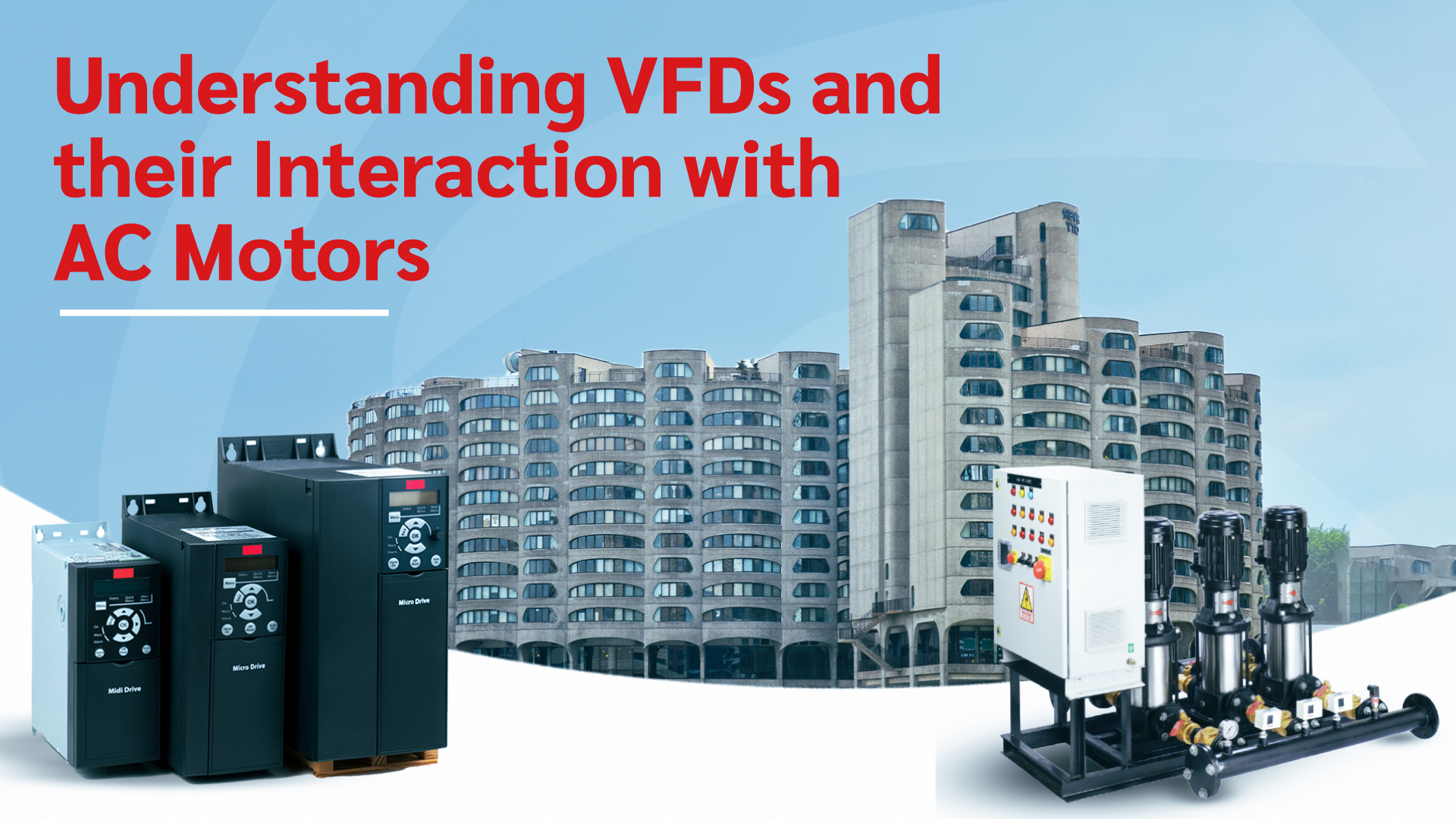
Understanding VFDs and Their Interaction with AC Motors
29-04-2024
In industrial and commercial applications, the integration of Variable Frequency Drives (VFDs) with AC motors has revolutionized the way we control and regulate motor speed. As industry professionals seek to optimize performance and reduce energy consumption, understanding the intricacies of VFDs and their interaction with AC motors is essential. These sophisticated electronic devices offer unparalleled flexibility, efficiency, and precision in motor operation, making them indispensable assets in various industries. In this comprehensive guide, we’ll delve into the intricacies of VFDs and explore their interaction with AC motors, providing valuable insights to industry professionals and decision-makers.
What Are VFDs?
Variable Frequency Drives (VFDs), also known as Variable Speed Drives or Inverters, are electronic devices designed to control the speed and torque of AC motors by varying the frequency and voltage of the electrical power supplied to the motor. Unlike traditional methods of motor control, such as mechanical throttling or valve regulation.
VFDs offer precise and dynamic speed control, resulting in improved energy efficiency, reduced wear and tear, and enhanced process control.
Components and Operation of VFDs:
A typical VFD consists of several key components, including rectifiers to convert AC to DC power, DC bus capacitors to store and smoothen the DC power output, insulated gate bipolar transistors (IGBTs), and pulse-width modulation (PWM) controllers.:
Overload Protection: VFDs incorporate built-in protection features such as overload detection and thermal monitoring to prevent motor damage and ensure safe operation.
Interaction with AC Motors: The compatibility and interaction between VFDs and AC motors are crucial for ensuring optimal performance and reliability.
Motor Type: VFDs are compatible with various types of AC motors, including induction motors, permanent magnet motors, and synchronous motors. However, certain motor designs may require special considerations for VFD operation, such as insulation class and bearing type.
Voltage and Frequency Range: Ensure that the VFD’s output voltage and frequency range are compatible with the motor’s rated voltage and frequency. Operating outside of these parameters can lead to motor overheating, insulation breakdown, and premature failure.
Cable Length and Quality: Proper selection of motor cables and consideration of cable length are essential to minimise voltage drop and ensure reliable motor operation. Shielded cables are often recommended to reduce electromagnetic interference (EMI) and maintain signal integrity
Installation and Commissioning: Follow manufacturer guidelines for the installation, setup, and commissioning of VFDs and AC motors. Proper wiring, grounding, and parameter configuration are critical to prevent issues such as motor resonance, overvoltage, and harmonics.
Maintenance and Troubleshooting: Regular maintenance of VFDs and AC motors, including inspection, lubrication, and vibration analysis, is essential to detect and address potential issues before they escalate. Troubleshooting techniques such as fault code analysis and thermal imaging can help identify and resolve problems quickly and efficiently.
VFD Control Strategies:
VFDs employ various control strategies to regulate motor speed and torque effectively:
- Speed Regulation: VFDs adjust motor speed by modulating the frequency of the output power. Higher frequencies result in faster motor speeds, while lower frequencies correspond to slower speeds.
- Feedback Sensors: VFDs utilise feedback sensors, such as flow, level, and pressure sensors, to monitor system parameters and automatically adjust motor speed based on predefined setpoints.
- PWM Technology: Pulse Width Modulation (PWM) is the most common control method used in VFDs. It involves rapidly switching the output voltage on and off to achieve the desired frequency and voltage levels.
Benefits of VFDs:
The integration of VFDs with AC motors offers numerous benefits, including:
- Energy Efficiency: By adjusting motor speed to match the load requirements, VFDs reduce energy consumption and lower operating costs.
- Process Control: VFDs provide precise speed and torque control, enabling fine-tuning of industrial processes for optimal performance and productivity.
1) Implementing Remote Monitoring and Control:
Soft Start and Stop: VFDs eliminate the mechanical stress associated with abrupt motor starts and stops, prolonging motor life and reducing maintenance costs.
Dynamic Braking:
- VFDs can decelerate motors rapidly, allowing for controlled stopping and reversing of motor direction without the need for mechanical braking systems.
Cable Length and Quality:
- Proper selection of motor cables and consideration of cable length are essential to minimise voltage drop and ensure reliable motor operation. Shielded cables are often recommended to reduce electromagnetic interference (EMI) and maintain signal integrity.
2) Installation and Commissioning::
Follow manufacturer guidelines for the installation, setup, and commissioning of VFDs and AC motors. Proper wiring, grounding, and parameter configuration are critical to prevent issues such as motor resonance, overvoltage, and harmonics
Energy Optimization:
- Maintenance and Troubleshooting: Regular maintenance of VFDs and AC motors, including inspection, lubrication, and vibration analysis, is essential to detect and address potential issues before they escalate.
- Troubleshooting techniques such as fault code analysis and thermal imaging can help identify and resolve problems quickly and efficiently .
AQUA GROUP’s Expertise
At AQUA GROUP, we understand the importance of VFDs and their interaction with AC motors in industrial and commercial applications. Our comprehensive range of VFDs and AC motors is engineered to deliver superior performance, reliability, and efficiency, meeting the diverse needs of our customers across various industries.
For clarity on selecting the right VFDs and AC motors for your specific requirements or to explore our range of products, reach out to us. Trust AQUA GROUP for reliable solutions that ensure efficient and sustainable operation of your industrial processes. Contact us today to learn more and partner with us for your motor control needs.
